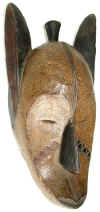 |
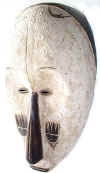 |
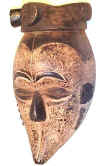 |
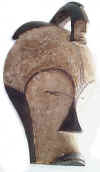 |
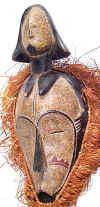 |
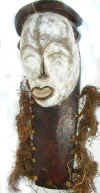 |
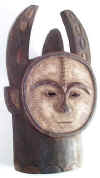 |
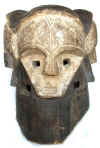 |
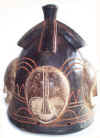 |
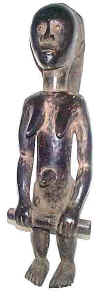 |
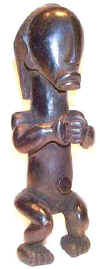 |
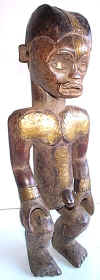 |
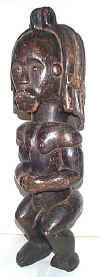 |
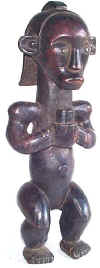 |
|
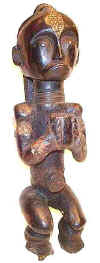 |
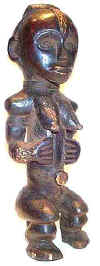 |
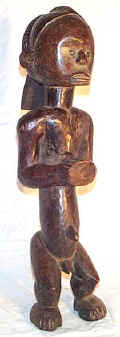 |
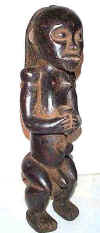 |
|
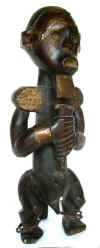 |
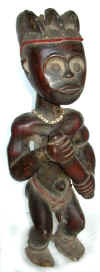 |
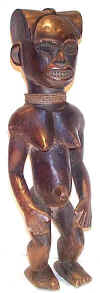 |
||
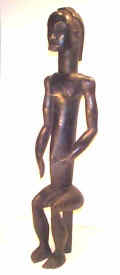 |
||||
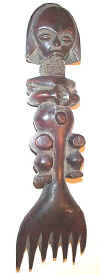 |
||||
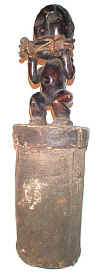 |
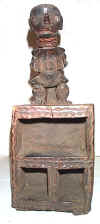 |
 |
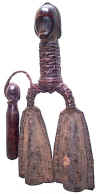 |
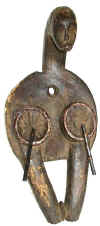 |
TRIBAL AFRICAN ART
FANG (FAN, MPANGWE, PAHOUIN,
PAHOUINS, PAHUINS, PAMUE, PANGWE)
Gabon, Cameroon and Equatorial Guinea
The people that are called “Fang” in the geographic or
ethnographic literature number 800,000 and constitute a vast mosaic of village
communities, established in a large zone of Atlantic equatorial Africa comprising
Cameroon, continental equatorial Guinea and nearly the whole north of Gabon, on the right
bank of the Ogowe River. Historically the Fang were itinerant, and it is relatively
recently that they have settled into this broad area. The migratory existence of the Fang
prohibited the creation of ancestral shrines at gravesites. Instead, the remains of the
important dead, in the form of the skull and other bones, were carried from place to place
in a cylindrical bark box. The great rain forest region where the Fang settled is a
plateau of middle altitude, cut by innumerable waters with falls and rapids rendering
navigation for the most part impossible, and with a climate typically equatorial. Fang are
principally hunters but also agriculturists. Their social structure is based on a clan, a
group of individuals with a common ancestor, and on the family.
The ensemble of Fang peoples practice a cult devoted to ancestor
lineages, the bieri, whose aim is to both protect themselves from the deceased and
to recruit their aid in matters of daily life. This familial cult does not monopolize the
Fang’s religious universe, for it coexists with other beliefs and rituals of a more
collective character. It is the bieri, or ancestor sculpture, which has most
obviously given rise to the making of remarkable wooden sculpture. The statuary of the
Fang can be classified into three main groups: heads on long necks, half-figures and full
figures, standing or seated. Carved with great simplicity, at the same time they exhibit a
high degree of sophistication in the coordination of bulbous forms. The neck is often a
massive cylindrical form. The arms have various positions: hands clasped in front of the
body (sometimes holding an object); held in front of the chest or attached to it; hands
resting on the knees in the seated figures. The navel is often exaggerated into a
cylindrical form. Legs are short, stunted. Usually there is a domed, wide forehead and the
eyebrows often form arcs with the nose. The eyes are often made of metal roundlets. The bieri
would be consulted when the village was to change location, when a new crop was planted,
during a palaver, or before going hunting, fishing, or to war. But once separated from the
reliquary chest, the sculpted object would lose its sacred value and could be destroyed.
The ritual consisted of prayers, libations, and sacrifices offered to the ancestor, whose
scull would be rubbed with powder and paint each time. With its large head, long body, and
short extremities, the Fang bieri had the proportion of a newborn, thus emphasizing
the group’s continuity with its ancestor and with the three classes of the society:
the “not-yet-born,” the living, and the dead. The relics were essentially skull
fragments, or sometimes complete skulls, jawbones, teeth and small bones. The bieri
also served for therapeutic rituals and, above all, for the initiation of young males
during the great so festival.
The Fang used masks in their secret societies. The ngil
(gorilla) masks were worn by members of a male society of the same name during the
initiation of new members and the persecution of wrong-doers. Masqueraders, clad in raffia
costumes and attended by helpers, would materialize in the village after dark, illuminated
by flickering torchlight. Fang masks, such as those worn by itinerant troubadours and for
hunting and punishing sorcerers, are painted white with facial features outlined in black.
Typical are large, elongated masks covered with kaolin and featuring a face that was
usually heart-shaped with a long, fine nose. Apparently it has been linked with the dead
and ancestors, since white is their color. The ngontang dance society also used
white masks, sometimes in the form of a four-sided helmet-mask with bulging forehead and
eyebrows in heart-shaped arcs. The ngontang mask symbolizes a ‘young white
girl’. The so, or red antelope was connected with an initiation that lasted
several months; these masks sport long horns.
Musical instruments – like the harp, its ends sculpted into
lovely figurines – allowed communication with the hereafter. Blacksmiths bellows,
many quite beautiful, were sculpted in the shape of figures; there are also small metal
disks featuring heads, called “passport-masks”, the Fang attached these to their
arms.
Special spoons were carved and used to administer magically
sustaining nourishment as part of traditional initiation rites. An individual man’s
spoon was a preciously guarded possession that was carried on his person in a shoulder bag
when he traveled and was placed on his tomb when he past away.